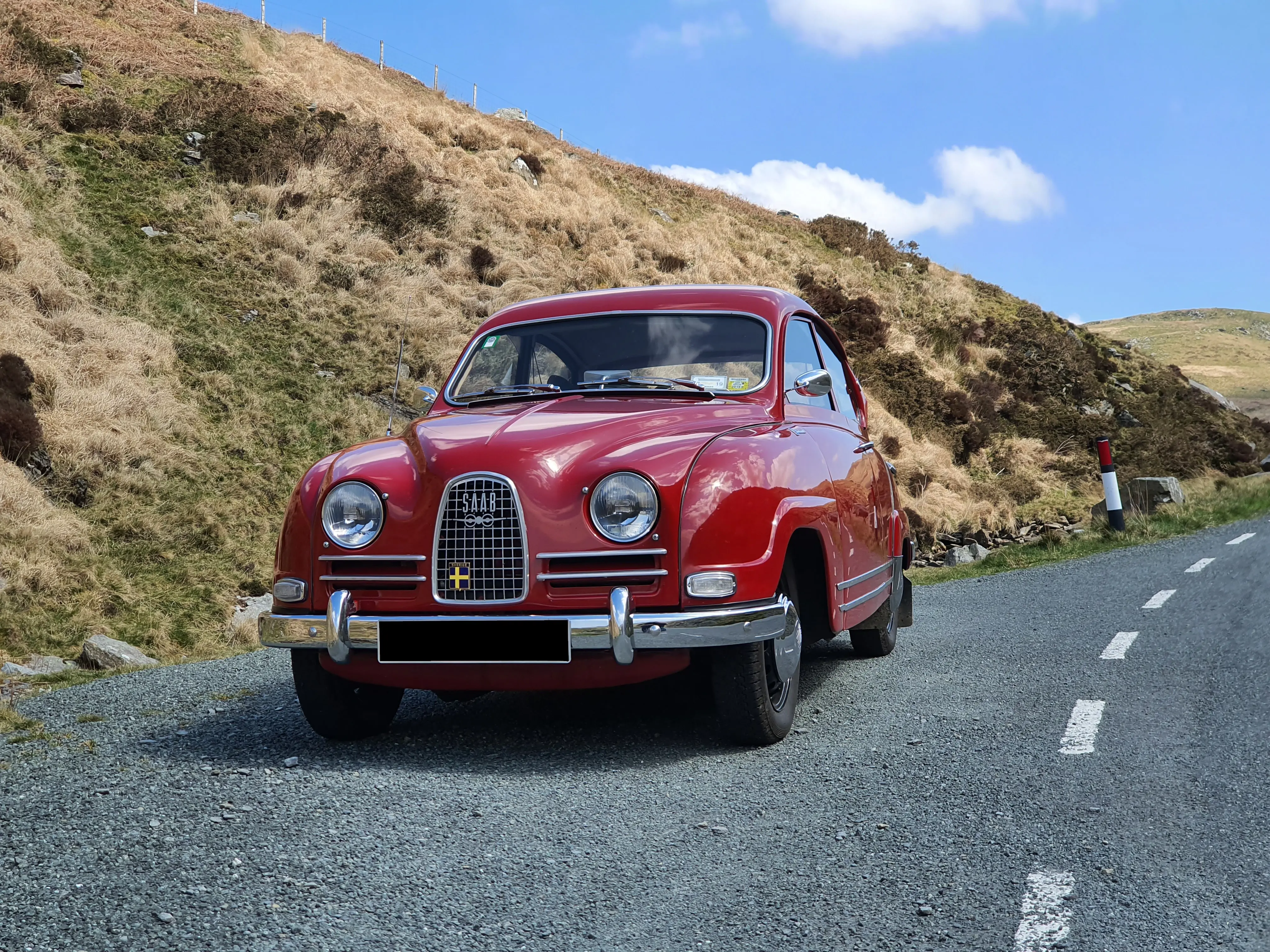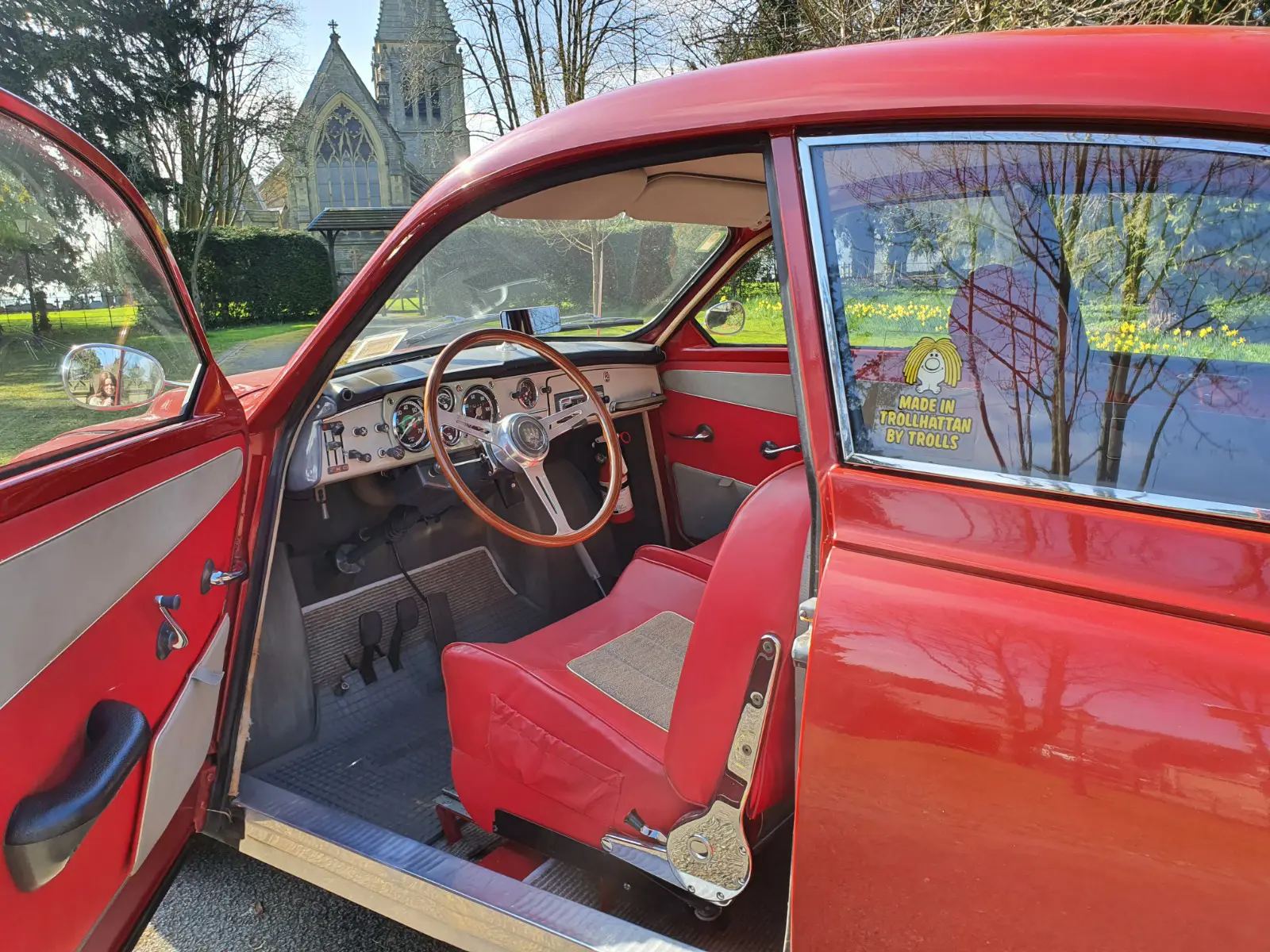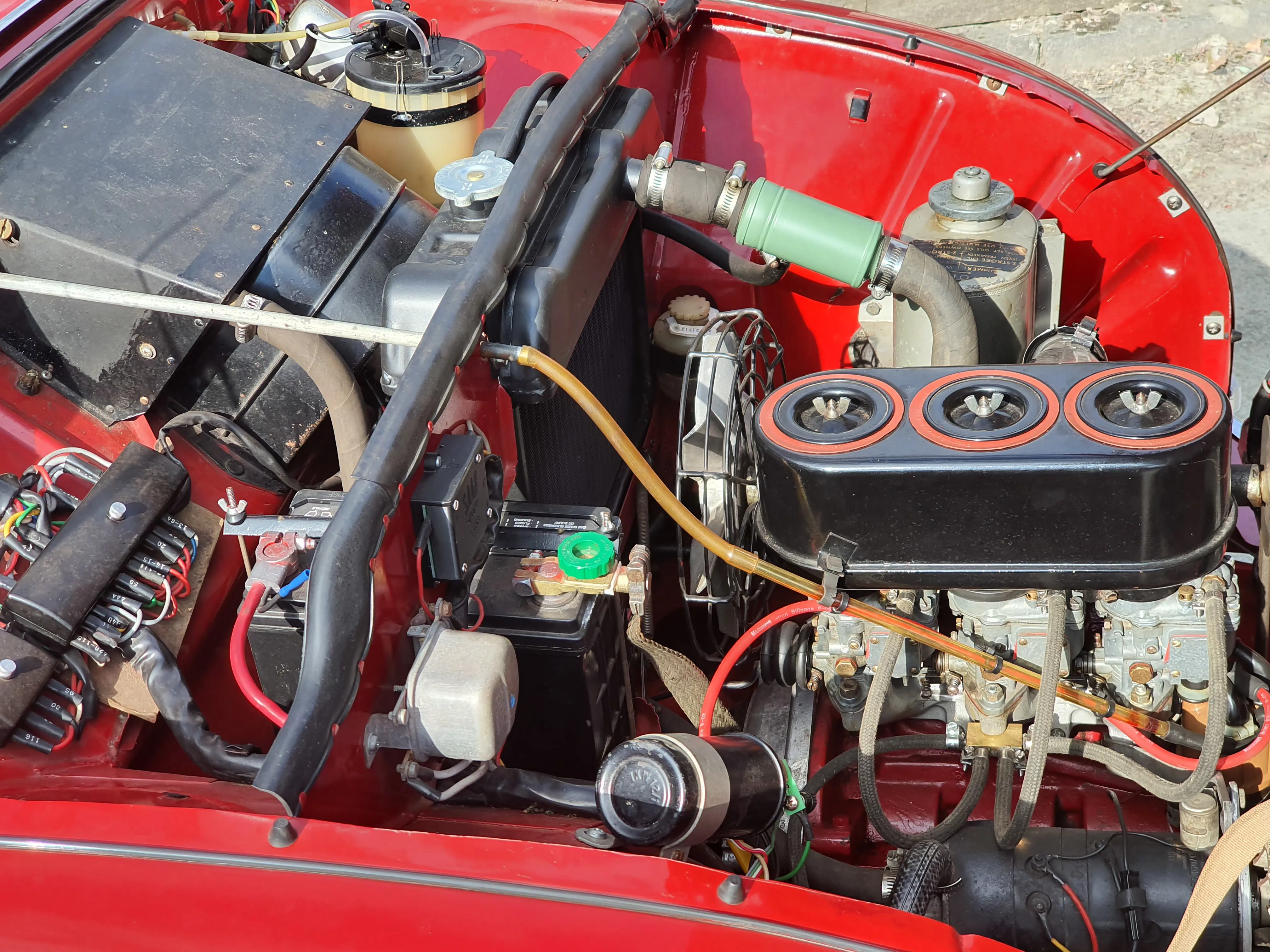MEET SVEN - THE 1964 SAAB GT850
10 April 2024
It would be fair to say that Sven, the 1964 Saab GT850, was one of the stars of the 2024 Practical Classics Classic Car and Restoration Show at the NEC. He dominated Hall 4, his twin aluminium stripes gleaming in the artificial light. When his custodian Jon Bentley opened the driver’s door, the wooden-rimmed steering wheel and VDO instruments mesmerised the visitors, and that is before you appreciated the 841cc two-stroke three-cylinder engine with its triple Solex 34 BIC carburettors.

As Road & Track once wrote:
Saab, to those who follow rallying, is a name that conjures up a vision of Erik Carlsson gently caroming off a snow bank as he speeds down a mountain toward the finish of the Monte Carlo Rally.
The 93-based GT750 was Saab’s first high-performance saloon, and production lasted commenced in 1958, and Jon points out “production actually went into the 96 range until 1962, but only a handful of cars were produced with the 750 GT engine”. The 96 replaced the 93 in 1960, and in 1962, it gained its own high-speed variant. The Sport – known as the GT850 in the USA, boasted a more powerful engine capable of a 90-mph top speed, front disc brakes and five stud wheels with competition tyres, while the instruments included a rev counter.
The GT850’s front occupants benefitted from Reutter reclining seats, and Jon also points out that Sven’s cabin features a headrest for the passenger – a typically thoughtful Saab detail. The brochure claimed it was for “the navigator”, as the GT850 was intended for the affluent weekend racer.

The company’s publicity for the US market further differentiated the GT850 from two principal forms of a rival. Firstly, the brochure emphasised how the Saab was so unlike the typical (i.e. imported British) open two-seater. “It can beat a sports car. Yet couldn’t possibly disguise as one”. Secondly, the sales copy appeared to dismiss the likes of the Pontiac Tempest, Buick Skylark and Ford Falcon Sprint; with the GT850, the keen driver would never have to “play Make Believe with a stick shift compact from Detroit”. Road & Track mused:
Admittedly, though, the Saab Granturismo 850 is not everybody’s glass of aquavit. If the characteristics of a 2-stroke engine make the owner feel as though he’s driving a popcorn popper, he won’t like it. Nor will he appreciate the messages sent to him through the tugs on the steering if he doesn’t like its front-wheel drive. Also, if he insists on a minimum amount of gear shifting, he won’t like it.
In 1963 Saab renamed US-market cars as the ‘Monte Granturismo GT850’ in honour of Erik Carlsson’s overall rally victories that year and in 1962. Together with the 96 and 95 estate, they gained a ‘long-nose’ facelift in 1964. Import duties ensured they were never a familiar sight in the UK; when Motor Sport evaluated the Sport in 1965 the price was £1,139. This was £190 more than the standard 96 and vastly more expensive than a Mini Cooper S for £778. The Saab was also more costly than a 3.3-litre Vauxhall Cresta PB, while the Renault 8 Gordini cost over £100 less. The reviewer noted:
There is a Rolls-Royce kind of presentation about a Saab, which its fine finish, excellent interior trim, and items such as the bottles-stowage under removable covers on each side of the rear compartment, pockets in the front doors and on the edges of the front-seat cushions, oddments stowage in caravan-type wells below the token back seat, high-quality minor controls, the 12 electrical fuses, and the mystique of the 3-cylinder Schnürle-cycle power unit emphasises. In use, however, you need to be an addict to appreciate this unusual car.

One of the Sport’s many idiosyncrasies were the transmission freewheel shared with its cheaper stablemates. Some motorists take some time to become acclimatised to its operation, but Jon finds it is an excellent system that complements the precise four-on-the-column gear change. Motor Sport may have claimed “Thinking in terms of sport, one would have to be truly a two-stroke fanatic, and terribly keen on durability and an element of luxury, to pay £1,139 for a Saab Sport”. However, owners prefer the description “enthusiast”.
Saab originally favoured two-stroke engines on cost grounds and because they made for easier starting in cold weather due to their requiring lower cranking effort. However, their popularity - and ability to meet various emissions regulations – decreased as the 1960s progressed, and in 1967 the 96/95 became available with Ford Taunus V4 power. No more would the name Saab be associated with clouds of blue exhaust smoke and that ‘ring-a-ding-ding’ engine note.
As for Sven himself, aka chassis number 213105/engine number 2458, his first owner was a Mr. John L. Pellinger of New York State. The price in January 1964 was $2,842, and Pellinger also specified an optional Blaupunkt radio. In 1973, he sold the Saab to Bob Abels, the sales manager of Drake Street Motors. Sven was repainted around this time and remained in Abels’s care for another forty-six years.
Sven came to the UK in 2019 and Jon bought him in 2021last. He is delighted with the public’s response to Sven at the NEC, for he really is a rather special motor car - the world’s finest unrestored GT850 or Sport. All of the 96’s details are present and correct - the side window demisters, the air extractor vents that clear the rear screen, and the adjustable angle for the back seat cushion – with the GT850’s refinements. He is not a car for the sort of motorist who believed wearing a flat hat at a jaunty angle constituted ‘sporting driving’ but for the connoisseur who appreciated the integrity of Sven’s engineering.
And he really does “Go Swift, Go Safe, Go Saab”.
With Thanks To – Jon Bentley
